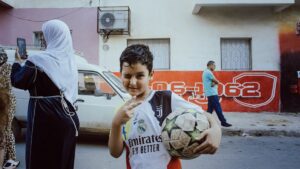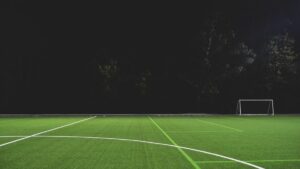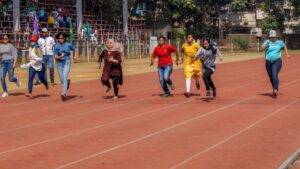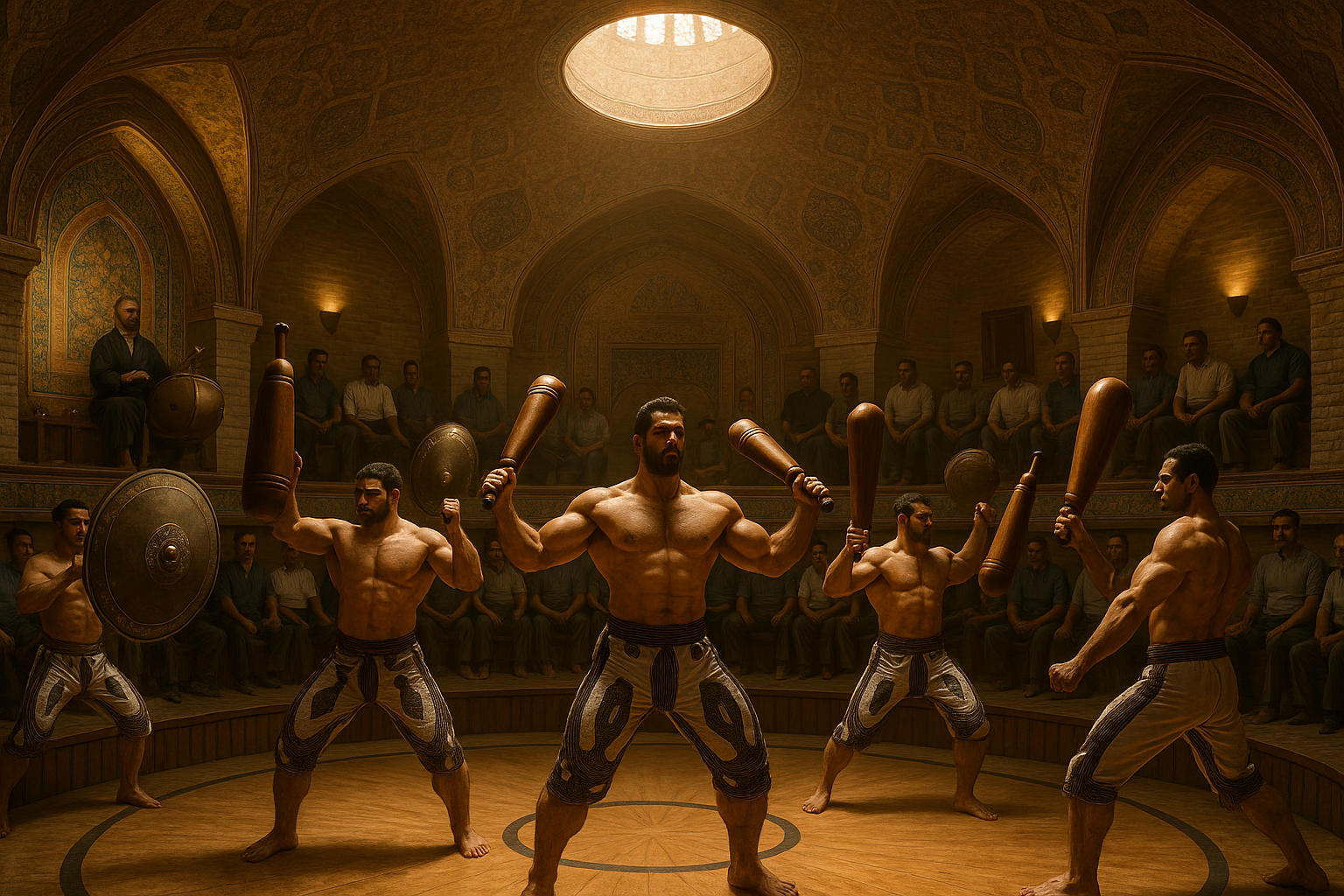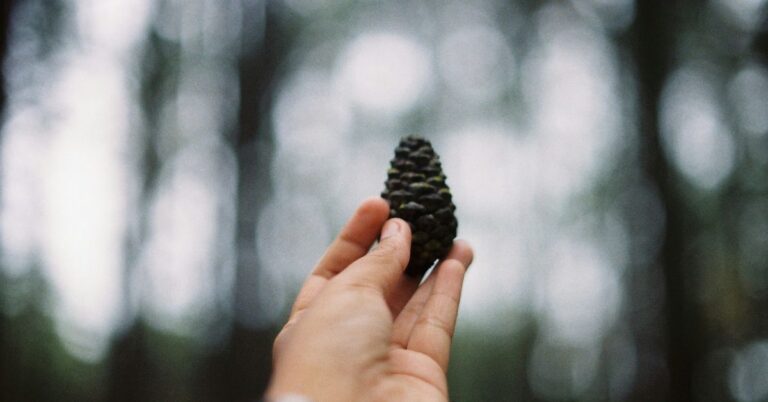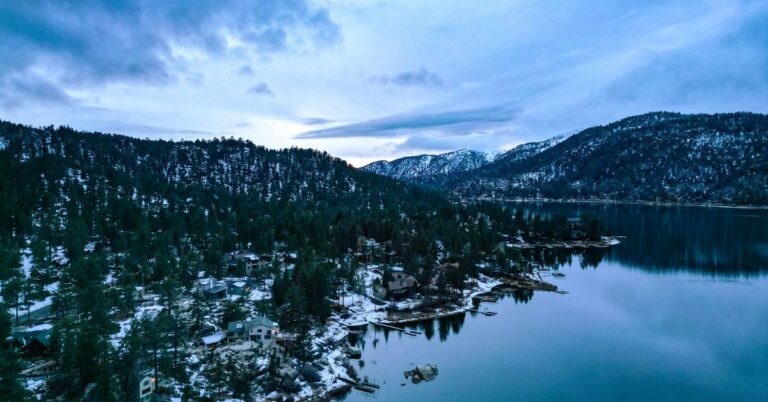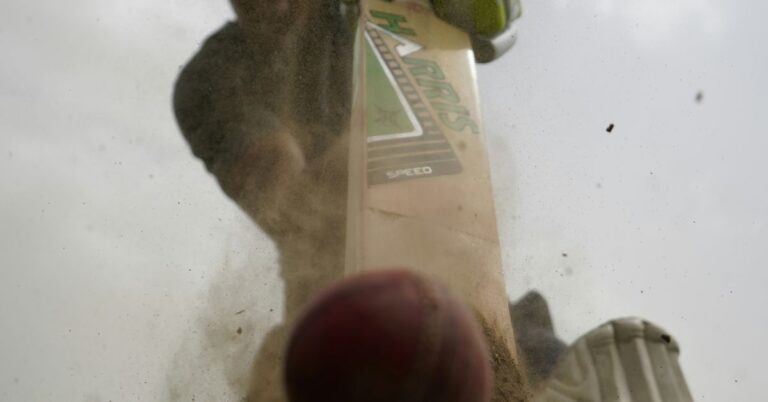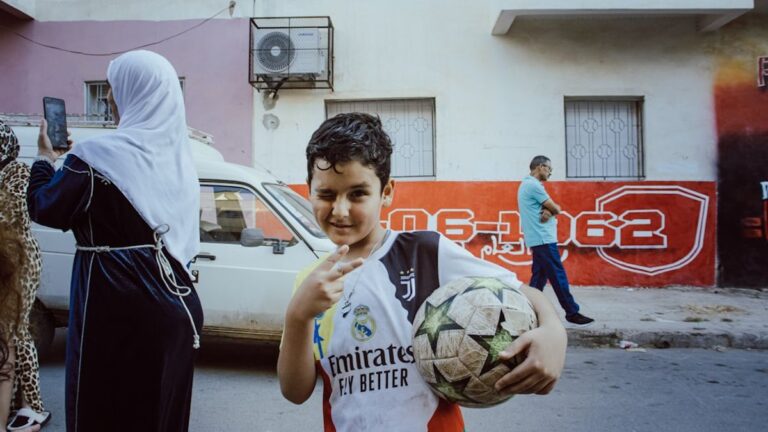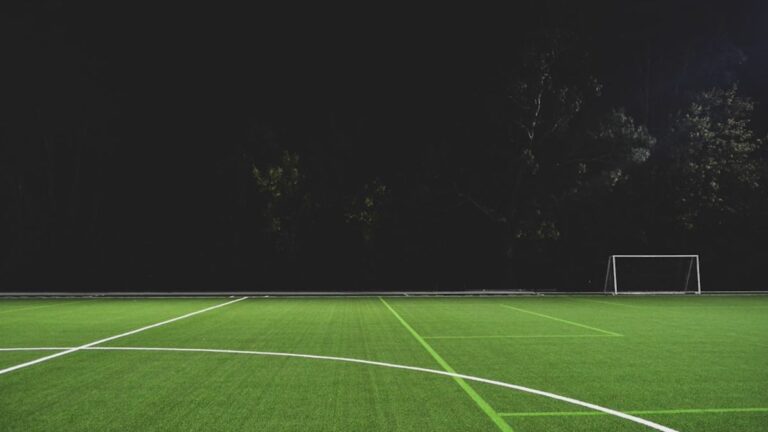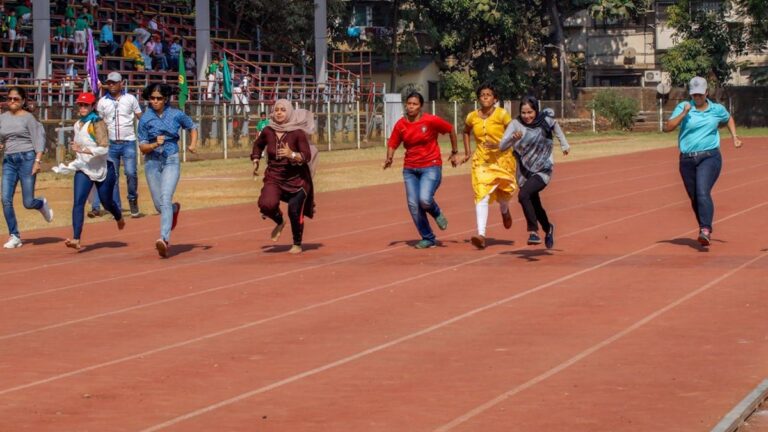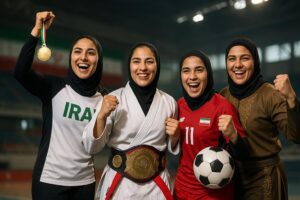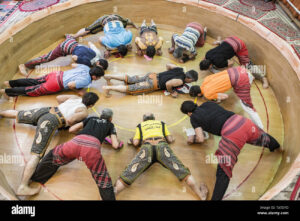By SportsPersia Editorial Team — Updated: September 29, 2025
Persian traditional sports 2025 are experiencing an unprecedented renaissance that bridges millennia of cultural heritage with contemporary athletic excellence. In an era dominated by modern sporting spectacles and digital entertainment, ancient Persian athletic traditions are not merely surviving—they’re thriving, evolving, and capturing global attention in ways that would have seemed impossible just a decade ago.
Table of Contents
- Introduction: The Ancient Meets the Modern
- Varzesh-e Bastani: The Foundation of Persian Athletic Heritage
- Zurkhaneh: Sacred Spaces of Strength and Spirituality
- UNESCO Recognition and Global Expansion
- Modern Revival: Technology Meets Tradition
- International Recognition and Diplomatic Soft Power
- Training Methods: Ancient Wisdom for Modern Athletes
- Cultural Impact and Community Building
- Challenges and Opportunities in 2025
- The Future of Persian Traditional Sports
- FAQ: Everything You Need to Know
- Conclusion: Preserving Heritage Through Athletic Excellence
Introduction: The Ancient Meets the Modern
The year 2025 marks a pivotal moment in the history of Persian traditional sports, as ancient practices that have endured for over four millennia find new relevance in our interconnected world. From the sacred halls of Tehran’s historic zoorkhanehs to modern fitness centers in Dubai, Los Angeles, and London, the rhythmic sounds of wooden clubs striking in unison echo a cultural revival that transcends geographical boundaries.
The 2025 Renaissance of Persian Sports
This renaissance isn’t accidental. It represents a confluence of factors that have aligned to create perfect conditions for the global expansion of Persian traditional sports. The UNESCO World Heritage recognition of Pahlevani and Zoorkhanei rituals in 2010 laid the foundation, but 2025 has witnessed an explosion of interest driven by social media documentation, international cultural exchange programs, and a growing global appetite for authentic, meaningful fitness practices.
Recent achievements by Iranian athletes on the world stage have further amplified this interest. The historic wrestling victories in 2025, where Iran’s national teams secured unprecedented success in both freestyle and Greco-Roman categories, have been celebrated not just in modern arenas but in traditional zoorkhanehs across the country, creating a powerful bridge between ancient and contemporary athletic excellence.
Why Traditional Sports Matter in the Digital Age
In our increasingly digital world, Persian traditional sports offer something that modern fitness culture often lacks: a deep connection to history, community, and spiritual development. These practices don’t just build physical strength; they cultivate mental resilience, cultural identity, and social bonds that have sustained Persian communities for generations.
The appeal extends far beyond the Persian diaspora. International practitioners are drawn to the holistic approach of these ancient systems, which integrate physical conditioning with philosophical teachings, musical rhythm, and communal participation. This comprehensive approach to human development resonates particularly strongly with contemporary wellness movements that seek to address not just physical fitness but mental and spiritual well-being.
Varzesh-e Bastani: The Foundation of Persian Athletic Heritage
Varzesh-e Bastani, literally meaning “ancient sport,” represents the cornerstone of Persian athletic tradition. This comprehensive system encompasses not just physical exercises but an entire philosophy of human development that has shaped Persian culture for over 4,500 years.
Historical Origins and Cultural Significance
The origins of Varzesh-e Bastani trace back to ancient Persia, where it served multiple functions within society. Initially developed as a training system for warriors, it evolved into a comprehensive cultural institution that combined physical conditioning, moral education, and spiritual development. The practice was particularly associated with the concept of “javanmardi” (chivalry), which emphasized courage, generosity, and protection of the weak.
Archaeological evidence suggests that similar practices existed during the Achaemenid Empire (550-330 BCE), though the formalized system we recognize today developed during the Islamic period. The integration of Islamic values with pre-Islamic Persian traditions created a unique synthesis that has endured through various political and social changes throughout Iranian history.
The UNESCO World Heritage Recognition (2010)
The UNESCO recognition in 2010 marked a crucial turning point for Persian traditional sports. This designation acknowledged Pahlevani and Zoorkhanei rituals as an “Intangible Cultural Heritage of Humanity,” providing international legitimacy and protection for these ancient practices.
The UNESCO recognition has had far-reaching effects beyond mere symbolic value. It has facilitated international cultural exchange programs, enabled academic research initiatives, and provided a framework for preserving and transmitting these traditions to future generations. More importantly, it has helped establish the credibility of Persian traditional sports in international sporting and cultural circles.
Equipment and Traditional Practices
The equipment used in Varzesh-e Bastani is both functional and symbolic, with each piece carrying deep cultural significance. The primary implements include:
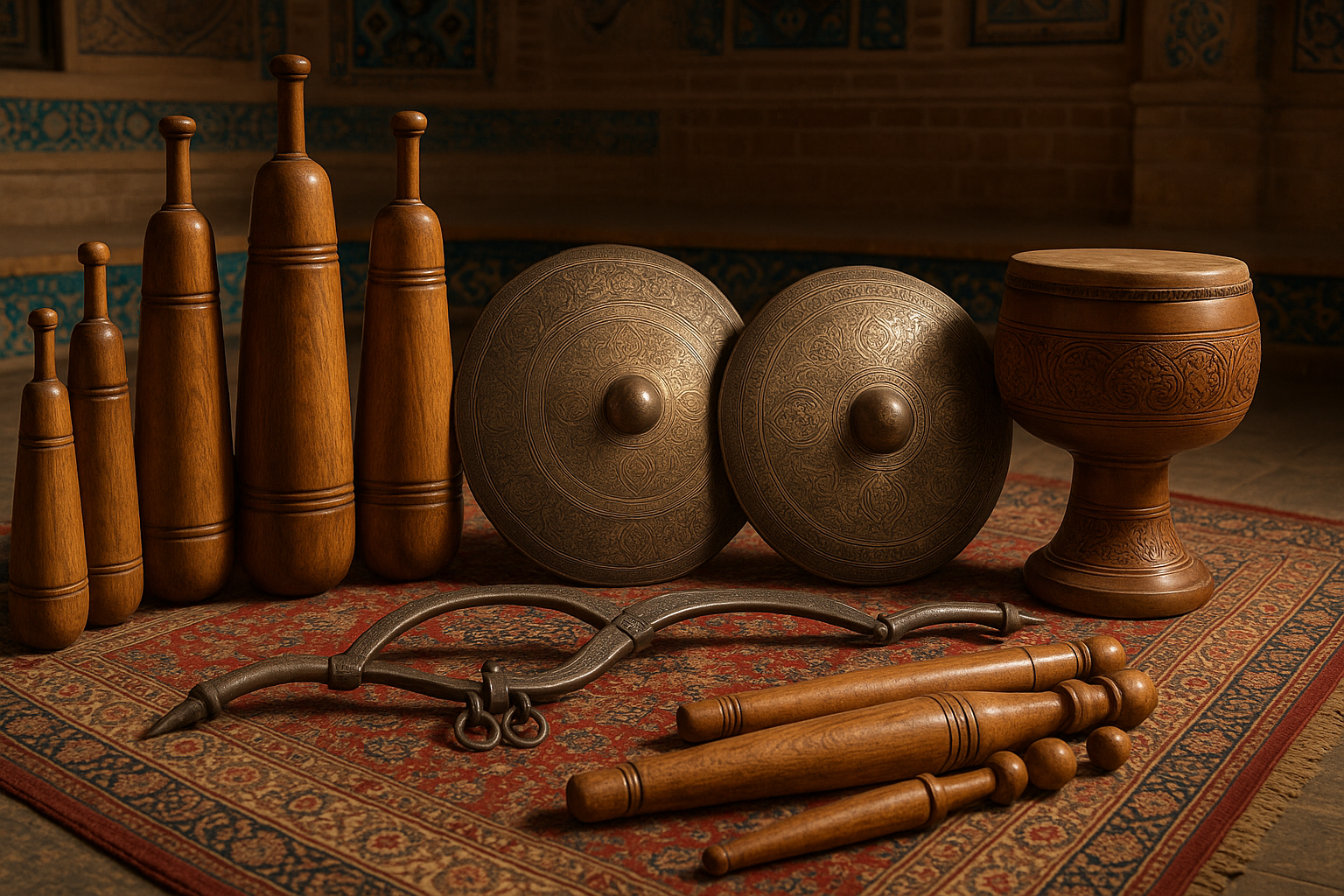
| Equipment | Persian Name | Function | Symbolic Meaning |
|---|---|---|---|
| Wooden Clubs | Mil | Upper body strength and coordination | Warrior’s mace, strength and protection |
| Metal Shields | Sang | Core stability and arm strength | Defense and honor |
| Bow-shaped Weights | Kabbadeh/Kaman | Flexibility and strength | Archer’s bow, precision and focus |
| Chain Mail | Zanjir | Shoulder and back conditioning | Burden of responsibility |
Each piece of equipment requires specific techniques and progressive training methods that have been refined over centuries. The wooden clubs, for instance, range from lightweight training implements to massive ceremonial pieces that can weigh over 50 kilograms, requiring years of dedicated practice to master.
Zurkhaneh: Sacred Spaces of Strength and Spirituality
The Zurkhaneh (literally “house of strength”) serves as the sacred space where Varzesh-e Bastani is practiced. These unique architectural structures are far more than mere gymnasiums; they are cultural institutions that embody the spiritual and social dimensions of Persian traditional sports.
Architecture and Sacred Geometry
Traditional zurkhaneh architecture follows specific principles that reflect both practical and spiritual considerations. The central feature is the “gaud,” a sunken octagonal or circular pit where athletes perform their exercises. This design serves multiple purposes: it provides optimal acoustics for the musical accompaniment, creates a sense of intimacy and focus, and symbolically represents the arena of life where individuals must prove their worth.
The surrounding elevated area, called “sardam,” accommodates spectators and the morshed (master musician). The ceiling typically features a dome with an opening that allows natural light to illuminate the practice area, creating a connection between earthly endeavors and divine inspiration. The architectural similarity to ancient fire temples and Islamic prayer spaces reflects the syncretic nature of Persian culture.
The Role of the Morshed (Master)
The morshed occupies a central position in zurkhaneh culture, serving as musician, storyteller, and spiritual guide. Seated on the elevated sardam, the morshed uses traditional percussion instruments, particularly the zarb (goblet drum), to provide rhythmic accompaniment for the exercises. However, their role extends far beyond musical performance.
Through recitation of classical Persian poetry, particularly works by Ferdowsi, Hafez, and Rumi, the morshed weaves together physical practice with cultural education and spiritual reflection. These recitations often focus on themes of heroism, justice, and moral virtue, reinforcing the ethical dimensions of the practice. The morshed also serves as a keeper of tradition, ensuring that proper techniques and cultural values are transmitted to new generations.
Rituals and Spiritual Dimensions
The practice of Varzesh-e Bastani in the zurkhaneh follows specific ritualistic patterns that emphasize respect, humility, and spiritual development. Sessions begin with the “rokhsat” (permission), where participants seek approval from the morshed and show respect to their elders and the sacred space.
The concept of “adab” (proper conduct) permeates every aspect of zurkhaneh culture. Participants must demonstrate not only physical prowess but also moral character, humility, and respect for others. This emphasis on character development distinguishes Persian traditional sports from purely physical fitness systems.
UNESCO Recognition and Global Expansion
The UNESCO recognition of Pahlevani and Zoorkhanei rituals has catalyzed a remarkable global expansion of Persian traditional sports, creating opportunities for cultural exchange and international appreciation that were previously unimaginable.
International Heritage Status Impact
Since receiving UNESCO recognition, Persian traditional sports have gained legitimacy in international cultural and sporting circles. This recognition has facilitated the establishment of cultural centers, educational programs, and exchange initiatives that have introduced these practices to diverse global audiences.
The heritage status has also provided a framework for preserving and documenting these traditions. Academic institutions worldwide have initiated research projects, while cultural organizations have developed preservation programs that ensure the authentic transmission of knowledge and practices.
Global Zurkhaneh Centers in 2025
The year 2025 has witnessed an unprecedented expansion of zurkhaneh centers worldwide. Major cities across North America, Europe, and Asia now host active communities of practitioners. Notable centers include:
- Los Angeles, USA: The largest Persian diaspora community has established multiple zurkhaneh centers serving both traditional practitioners and curious newcomers.
- London, UK: The British Museum’s cultural programs have helped legitimize and promote Persian traditional sports in academic and cultural circles.
- Dubai, UAE: Recent events showcasing Varzesh-e Bastani have attracted international attention and investment in cultural preservation programs.
- Toronto, Canada: The multicultural environment has proven particularly receptive to Persian traditional sports as part of broader cultural diversity initiatives.
Cultural Diplomacy Through Sports
Persian traditional sports have emerged as powerful tools of cultural diplomacy, offering Iran a means of engaging with the international community through shared appreciation of cultural heritage. Despite political tensions, these ancient practices have created bridges of understanding and mutual respect.
International workshops, cultural festivals, and academic conferences have provided platforms for cultural exchange that transcend political boundaries. The universal appeal of these practices—their emphasis on character development, community building, and holistic wellness—resonates across cultural and national divides.
Modern Revival: Technology Meets Tradition
The 2025 revival of Persian traditional sports represents a fascinating intersection of ancient wisdom and modern technology, creating new possibilities for preservation, education, and global dissemination.
Digital Documentation and Preservation
Advanced digital technologies are playing a crucial role in preserving and transmitting Persian traditional sports knowledge. High-definition video documentation, motion capture technology, and virtual reality applications are creating comprehensive archives of techniques, rituals, and cultural practices.
These digital preservation efforts serve multiple purposes: they ensure that knowledge is not lost as older masters pass away, they provide standardized references for training and education, and they make these traditions accessible to global audiences who cannot physically visit traditional zurkhaneh centers.
Social Media and Global Awareness
Social media platforms have become powerful vehicles for promoting Persian traditional sports worldwide. Instagram accounts, YouTube channels, and TikTok videos showcasing the beauty and power of these ancient practices have attracted millions of views and sparked international interest.
The visual appeal of Persian traditional sports—the rhythmic movements, traditional costumes, and atmospheric zurkhaneh settings—translates exceptionally well to social media formats. This has created a new generation of practitioners and enthusiasts who first encountered these traditions through digital platforms.
Modern Training Adaptations
Contemporary fitness science is being integrated with traditional Persian training methods to create hybrid approaches that maintain cultural authenticity while incorporating modern understanding of exercise physiology, injury prevention, and performance optimization.
Fitness professionals worldwide are adapting Persian traditional sports techniques for modern gym environments, creating accessible entry points for individuals who might not have access to traditional zurkhaneh centers. These adaptations maintain the essential elements of the practice while making them suitable for contemporary fitness contexts.
International Recognition and Diplomatic Soft Power
The international success of Iranian athletes in 2025 has created unprecedented opportunities for showcasing Persian traditional sports on the global stage, demonstrating their relevance to contemporary athletic excellence.
Iran’s Wrestling Dominance in 2025
Iran’s historic achievements in wrestling championships during 2025 have been celebrated not just as sporting victories but as validations of traditional Persian training methods. The connection between modern wrestling success and ancient zurkhaneh practices has been highlighted by athletes, coaches, and cultural commentators.
Many successful Iranian wrestlers credit their foundation in Persian traditional sports for developing the mental toughness, cultural pride, and technical skills that have contributed to their international success. This connection has elevated the profile of traditional practices and demonstrated their continued relevance to contemporary athletic performance.
Cultural Exchange Programs
International cultural exchange programs have facilitated the spread of Persian traditional sports knowledge to diverse global communities. Universities, cultural centers, and sporting organizations have developed partnerships that enable authentic transmission of these practices.
These programs often combine physical training with cultural education, providing participants with comprehensive understanding of the historical, philosophical, and social dimensions of Persian traditional sports. The holistic approach has proven particularly appealing to international audiences seeking meaningful alternatives to conventional fitness programs.
Challenges with International Competitions
Despite growing international interest, Persian traditional sports face significant challenges in international competition contexts. The recent visa denial for Iran’s polo team at the 2025 World Championship illustrates how political tensions can impede cultural and sporting exchange.
These challenges highlight the need for international sporting organizations to develop frameworks that separate cultural and athletic activities from political considerations. The universal appeal and cultural value of Persian traditional sports argue for their protection from political interference.
Training Methods: Ancient Wisdom for Modern Athletes
The training methodologies embedded within Persian traditional sports offer sophisticated approaches to human development that remain remarkably relevant to contemporary athletic and fitness goals.
Physical Conditioning Techniques
Persian traditional sports employ progressive training systems that develop strength, flexibility, coordination, and endurance through carefully structured exercises. The use of traditional implements creates unique training stimuli that challenge the body in ways that modern equipment often cannot replicate.
The wooden club exercises, for example, develop rotational strength, grip endurance, and shoulder stability through complex movement patterns that engage multiple muscle groups simultaneously. The progressive weight increases—from lightweight training clubs to massive ceremonial implements—provide a systematic approach to strength development that spans decades of practice.
Mental and Spiritual Preparation
The integration of mental and spiritual development within physical training distinguishes Persian traditional sports from purely physical fitness systems. The emphasis on concentration, rhythm, and mindful movement creates meditative states that enhance both performance and personal development.
The musical accompaniment serves not just as entertainment but as a training tool that develops timing, rhythm, and the ability to maintain focus under varying conditions. The recitation of poetry and moral teachings during practice sessions reinforces the connection between physical development and character formation.
Integration with Modern Fitness
Contemporary fitness professionals are discovering that Persian traditional sports techniques can enhance modern training programs by addressing gaps in conventional approaches. The emphasis on functional movement patterns, unilateral training, and mind-body integration complements modern exercise science principles.
Many professional athletes and fitness enthusiasts are incorporating elements of Persian traditional sports into their training routines, finding that these ancient practices improve performance, reduce injury risk, and provide mental benefits that enhance overall athletic development.
Cultural Impact and Community Building
Persian traditional sports serve as powerful vehicles for cultural preservation, identity formation, and community building, particularly within diaspora communities worldwide.
Preserving Persian Identity
For Persian communities living outside Iran, traditional sports provide tangible connections to cultural heritage that help maintain identity across generations. The practice of Varzesh-e Bastani becomes a form of cultural resistance against assimilation pressures while offering positive expressions of Persian identity.
The transmission of these practices from older to younger generations creates intergenerational bonds that strengthen community cohesion. Young people who might otherwise lose connection to their cultural roots find meaning and pride through participation in these ancient traditions.
Community Centers and Social Cohesion
Zurkhaneh centers function as community hubs that extend far beyond athletic training. They serve as gathering places for cultural events, social support networks, and educational activities that strengthen community bonds and provide resources for community members.
The emphasis on mutual respect, mentorship, and collective achievement creates social environments that foster positive relationships and community support. These centers often become focal points for broader cultural activities, including language classes, cultural celebrations, and community service initiatives.
Youth Engagement and Education
Persian traditional sports offer unique opportunities for youth engagement that combine physical activity with cultural education and character development. Young people who participate in these practices often develop stronger cultural identity, improved self-discipline, and enhanced social skills.
Educational programs that integrate Persian traditional sports with academic curricula provide holistic approaches to youth development that address physical, mental, and cultural needs. These programs have proven particularly effective in multicultural educational environments where cultural diversity is valued and celebrated.
Challenges and Opportunities in 2025
The revival of Persian traditional sports in 2025 presents both significant opportunities and substantial challenges that will shape the future development of these ancient practices.
Political Barriers and Visa Issues
Political tensions continue to create barriers for international participation and cultural exchange. Visa restrictions, travel limitations, and diplomatic tensions can impede the natural flow of cultural transmission and international collaboration that these practices require for optimal development.
The challenge lies in developing frameworks that protect cultural activities from political interference while maintaining the authentic connections to Persian heritage that give these practices their meaning and legitimacy. International cultural organizations and sporting bodies have important roles to play in advocating for the separation of cultural activities from political considerations.
Modernization vs. Tradition Balance
The integration of Persian traditional sports with modern contexts requires careful balance between maintaining authenticity and adapting to contemporary needs. The challenge is to preserve the essential cultural and spiritual elements while making these practices accessible and relevant to modern practitioners.
This balance requires ongoing dialogue between traditional masters, cultural scholars, and modern practitioners to ensure that adaptations enhance rather than diminish the value and meaning of these ancient practices. The goal is evolution rather than dilution of traditional knowledge.
Global Market Potential
The growing global interest in holistic wellness, cultural authenticity, and meaningful fitness experiences creates significant market opportunities for Persian traditional sports. The challenge lies in developing sustainable business models that support authentic practice while generating economic benefits for communities and practitioners.
Opportunities exist in areas such as cultural tourism, educational programs, fitness instruction, equipment manufacturing, and digital content creation. The key is to develop these opportunities in ways that honor and support traditional communities while creating pathways for broader participation and appreciation.
The Future of Persian Traditional Sports
The trajectory of Persian traditional sports in 2025 suggests a bright future characterized by continued growth, international recognition, and innovative adaptations that maintain cultural authenticity while embracing contemporary opportunities.
Olympic Recognition Prospects
The growing international recognition of Persian traditional sports, combined with the Olympic movement’s increasing emphasis on cultural diversity and traditional sports, creates possibilities for future Olympic inclusion. While full Olympic recognition may be distant, demonstration events and cultural programs could provide platforms for international showcase.
The precedent set by other traditional sports gaining Olympic recognition suggests that Persian traditional sports could follow similar pathways, particularly if international standardization and governance structures can be developed while maintaining cultural authenticity.
Educational Integration
The integration of Persian traditional sports into educational curricula offers significant opportunities for cultural preservation and youth development. Universities, schools, and cultural institutions are increasingly recognizing the educational value of these practices for teaching history, culture, and holistic human development.
Academic programs that combine physical practice with scholarly study of Persian culture, history, and philosophy create comprehensive educational experiences that serve both cultural preservation and academic excellence goals.
Sustainable Development Goals
Persian traditional sports align well with United Nations Sustainable Development Goals, particularly those related to cultural preservation, community development, health and wellness, and international cooperation. This alignment creates opportunities for international support and recognition that could facilitate continued growth and development.
The emphasis on community building, character development, and cultural preservation within Persian traditional sports provides models for sustainable development that integrate cultural heritage with contemporary social needs.
FAQ: Everything You Need to Know
What is Varzesh-e Bastani and why is it important?
Varzesh-e Bastani, meaning “ancient sport,” is a comprehensive Persian athletic and cultural system that combines physical conditioning, moral education, and spiritual development. It’s important because it represents over 4,500 years of Persian cultural heritage and provides holistic approaches to human development that remain relevant today. The practice was recognized by UNESCO as an Intangible Cultural Heritage of Humanity in 2010, acknowledging its global cultural significance.
How did Persian traditional sports influence modern athletics?
Persian traditional sports have influenced modern athletics through their emphasis on functional movement patterns, progressive training systems, and holistic athlete development. Many contemporary training techniques, particularly in wrestling and strength conditioning, can trace their origins to Persian traditional methods. The integration of mental, physical, and spiritual development in Persian sports has also influenced modern approaches to sports psychology and athlete wellness.
Where can I learn Zurkhaneh practices outside of Iran?
Zurkhaneh centers now exist in major cities worldwide, including Los Angeles, London, Dubai, Toronto, and many others. Many Persian cultural centers offer classes, and some fitness facilities have incorporated Persian traditional sports elements into their programs. Online resources, including instructional videos and virtual classes, also provide learning opportunities for those without access to physical centers.
What equipment is needed for traditional Persian sports?
Traditional Persian sports use specific implements including wooden clubs (mil), metal shields (sang), bow-shaped weights (kabbadeh), and chain mail (zanjir). Beginners typically start with lightweight versions of these implements and progress to heavier ceremonial pieces over time. Many modern adaptations use modified equipment that maintains the essential training benefits while being more accessible to contemporary practitioners.
How does UNESCO recognition impact these sports?
UNESCO recognition provides international legitimacy, protection, and support for Persian traditional sports. It facilitates cultural exchange programs, academic research, and preservation efforts. The recognition also helps establish credibility in international cultural and sporting circles, creating opportunities for global expansion and appreciation that might not otherwise exist.
Are Persian traditional sports suitable for modern fitness?
Yes, Persian traditional sports offer excellent fitness benefits including strength development, cardiovascular conditioning, flexibility, coordination, and mental wellness. The progressive nature of the training systems makes them suitable for practitioners of all fitness levels. Many modern fitness professionals are incorporating elements of Persian traditional sports into contemporary training programs.
What role do these sports play in Iranian culture today?
Persian traditional sports continue to play important roles in Iranian culture as vehicles for cultural preservation, community building, and identity formation. They serve as connections to historical heritage while providing contemporary benefits for physical and mental wellness. The recent success of Iranian athletes in international competitions has renewed pride and interest in these traditional practices.
How can international athletes participate in Persian traditional sports?
International athletes can participate through cultural centers, specialized training programs, and international workshops. Many Persian communities welcome international participants and provide instruction in both the physical techniques and cultural context. Online resources and international cultural exchange programs also provide pathways for participation and learning.
Conclusion: Preserving Heritage Through Athletic Excellence
The renaissance of Persian traditional sports 2025 represents far more than a revival of ancient athletic practices. It embodies a profound cultural movement that demonstrates how traditional knowledge systems can not only survive but thrive in contemporary contexts when their inherent value is recognized and nurtured.
The success of this revival lies in its ability to maintain authentic connections to Persian cultural heritage while adapting to modern needs and opportunities. The integration of ancient wisdom with contemporary technology, the balance between tradition and innovation, and the expansion from local communities to global audiences all demonstrate the enduring relevance and appeal of these remarkable practices.
As we look toward the future, Persian traditional sports offer valuable lessons about cultural preservation, community building, and holistic human development. They remind us that the most enduring athletic traditions are those that address not just physical fitness but the full spectrum of human potential—mental, spiritual, and social development.
The global expansion of Persian traditional sports in 2025 creates opportunities for cross-cultural understanding, international cooperation, and shared appreciation of human cultural diversity. In a world often divided by political and cultural differences, these ancient practices offer common ground where people of all backgrounds can come together in pursuit of excellence, character development, and mutual respect.
The silent revolution of Persian traditional sports continues to unfold, carrying forward the wisdom of ancient Persia while embracing the possibilities of our interconnected modern world. Through the dedication of practitioners, the support of cultural institutions, and the growing international recognition of their value, these remarkable traditions will continue to inspire and strengthen communities for generations to come.
Fontes & Referências
- UNESCO Intangible Cultural Heritage – Pahlevani and Zoorkhanei rituals. Available at: https://ich.unesco.org/en/RL/pahlevani-and-zoorkhanei-rituals-00378
- Iran Press. “Iranian Wushu Team Wins Runner-Up at 2025 World Championship.” September 8, 2025.
- HiPersia. “Pahlevani and Zoorkhanei rituals – Iranian Martial art.” Updated September 4, 2025.
- Press TV. “Iran roars back to wrestling glory with historic freestyle and Greco-Roman world titles.” September 23, 2025.
- Tehran Times. “Barancheshmeh remains head of Iran’s Zurkhaneh and Koshti Pahlevani.” September 28, 2025.
- Wikipedia. “Chovgan.” Last updated September 2, 2025.
- Tehran Times. “Iranian team denied visa for World Polo Championship.” September 26, 2025.
- IKI Kurash Organization. “Kurash: The Ancient Art Rising in a Modern World.” August 29, 2025.
- Consulate General of Iran – Mumbai. “A New Dawn in Iranian Wrestling.” September 23, 2025.
- Nour News. “50 Iranian sites added to UNESCO’s Tentative List for global recognition.” September 26, 2025.
- Traditional Sports Organization. “News.” September 14, 2025.
- Britannica. “Martial arts.” Updated September 22, 2025.

